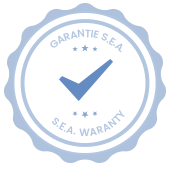Many do not know that storage containers are available to be rented and purchased. More even do not know that they can be used in various ways. Despite shipping containers being used as portable offices and structural frameworks of houses, the truth is that they are most often used for their purpose, that is, shipping. Some will not understand the idea of shipping vehicles by containers but the truth is that such methods provide reliable means and allows vehicles to arrive in the best possible conditions. When renting a shipping container, and even alternatively when buying a container to transport vehicles of all sorts there are things which need to be attended to. It is important that the vehicle’s fuel tank is empty as most shipping companies require a maximum of ⅛ of the vehicle’s capacity and that the batteries have been disconnecter. For those who are travelling with a speciality car, whether a Land Rover or any other, it is recommended that the alarm be disconnected and that obviously all valuables be taken out of the vehicle. When shipping vehicles across seas whether domestically or internationally and in all transportation options for containers it is necessary that the car be strapped and it is important to remember that some lines allow the customer to load their own containers but others do not. Often in fastening your vehicle, agencies will use straps as well as wheel chocks and wooden blocks fastened behind the vehicle wheels. This fastening of the vehicle provides the safest available transport method for any vehicle. It is recommendable, when possible to oversee the team strapping the vehicle as the straps might be made of nylon rope as it is all which is available. In these cases, jumping up and down on the rope which has been attached to the vehicle will display whether the nylon can withstand a storm. If the nylon rope breaks, it clearly needs another rope to hold it in place. Some might be inclined to go the extra mile such as locking the vehicle doors before customs perform their final check. After this, the container is locked and sealed with a number and owners are provided with important shipping documents in anticipation of their upcoming landing spot.
×
A closer look to shipping vehicles in containers

At Containers S.E.A., we aim to satisfy and constantly support our customers
during
all
The process of buying or leasing containers. For this, we are counting on an excellent report
price quality,
Communication combined with efficient logistics and experience in the field of
to rent of Containers.
Bring us your container leasing projects: we will know how to fill you Expectations !
Bring us your container leasing projects: we will know how to fill you Expectations !
